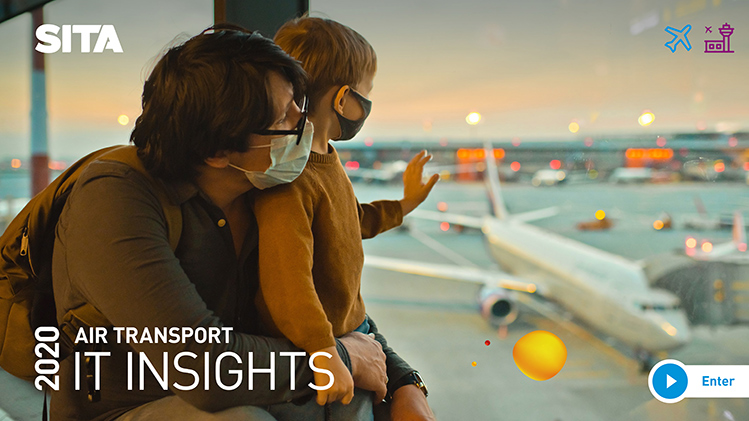Airports Council International (ACI) World has issued a report revealing that airports have accelerated investments in technology to aid in recovery from the COVID-19 pandemic.
ACI World has collaborated with SITA for the past 17 years on the annual Airport IT Trends Survey, the most extensive study of IT trends within the global airport industry, which feeds into SITA’s Air Transport IT Insights. This year’s report has found that airports have been agile in adapting to the changing health and safety requirements, focusing on automated and touchless solutions for both customers and staff.
Results from the survey reveal airports are spending 5.46% of revenues in 2020 on IT – which represents about $3.5 billion (€3bn) in absolute spend – and that 55% of the responding airports estimate that their 2021 IT budgets will either stay the same or increase.

ACI World has collaborated with SITA for the past 17 years on the annual Airport IT Trends Survey, the most extensive study of IT trends within the global airport industry, which feeds into SITA’s Air Transport IT Insights. This year’s report has found that airports have been agile in adapting to the changing health and safety requirements, focusing on automated and touchless solutions for both customers and staff.
The survey revealed that 87% of airports confirmed that programmes to address passenger health and safety protocols have either been implemented or are planned. These include sensors, video monitoring, and robots to automatically monitor passenger social distancing, temperature checks, sanitization, and other health criteria.
Business intelligence tools, which can be linked to these technologies to help staff maintain a safe airport environment for all customers and staff, ranked third of airport’s top investments. Touchless self-service offerings at airports have been an unsurprising investment, with an increasing number of airports having implemented solutions during the pandemic. Biometric technology is the focus for airport investment with 64% of airports aiming to roll out self-boarding gates using biometric & ID documentation by 2023, three times as many as in 2020.
“Airports have done so much already to improve the customer experience, our industry cannot afford to lose ground on this progress, despite the challenging environment we are in,” says Luis Felipe de Oliveira, Director General, ACI World. “These findings are encouraging. There is no doubt that the health and well-being of customers, and their experience, remains airports’ top priority. This is not just an investment to meet the demand of the pandemic, but in line with a longer-term trend and a solid investment in the future.”
David Lavorel, CEO SITA at Airports and Borders, comments: “In the face of a severe slowdown in 2020, the air transport industry was forced to focus on driving new cost efficiencies. Adding to the pressure, airlines and airports had to rapidly incorporate new health measures such as touchless passenger processing and the handling of new health information and protocols including PCR testing in many destinations. To solve these challenges the industry has turned to technology such as biometric technology (83% of airports), offering more mobile apps for passengers and staff, and focusing on remote and virtual IT services.”
180 IT decision-makers in 41 countries responded to the survey in the last quarter of 2020.
Other notable findings include:
- 89% of airports confirmed they offered self-service check-in options
- 64% said they have implemented biometric-enabled immigration border gates
- 79% of respondents said they provided bag tags capability at kiosks
- 77% of airports will implement the infrastructure, or have already done so, to support biometric touchpoints across the airport
- 67% of airports will implement or have implemented self-service boarding gates
- 52% of airports have or plan to implement ACRIS standards for data sharing
- 83% of airports are implementing a major cyber security programme with 11% looking into a pilot programme.
For the first time this year, the survey included specific questions around digital transformation. ACI World is working on a handbook on the subject for publication this spring to help airports on their digital transformation journey.







